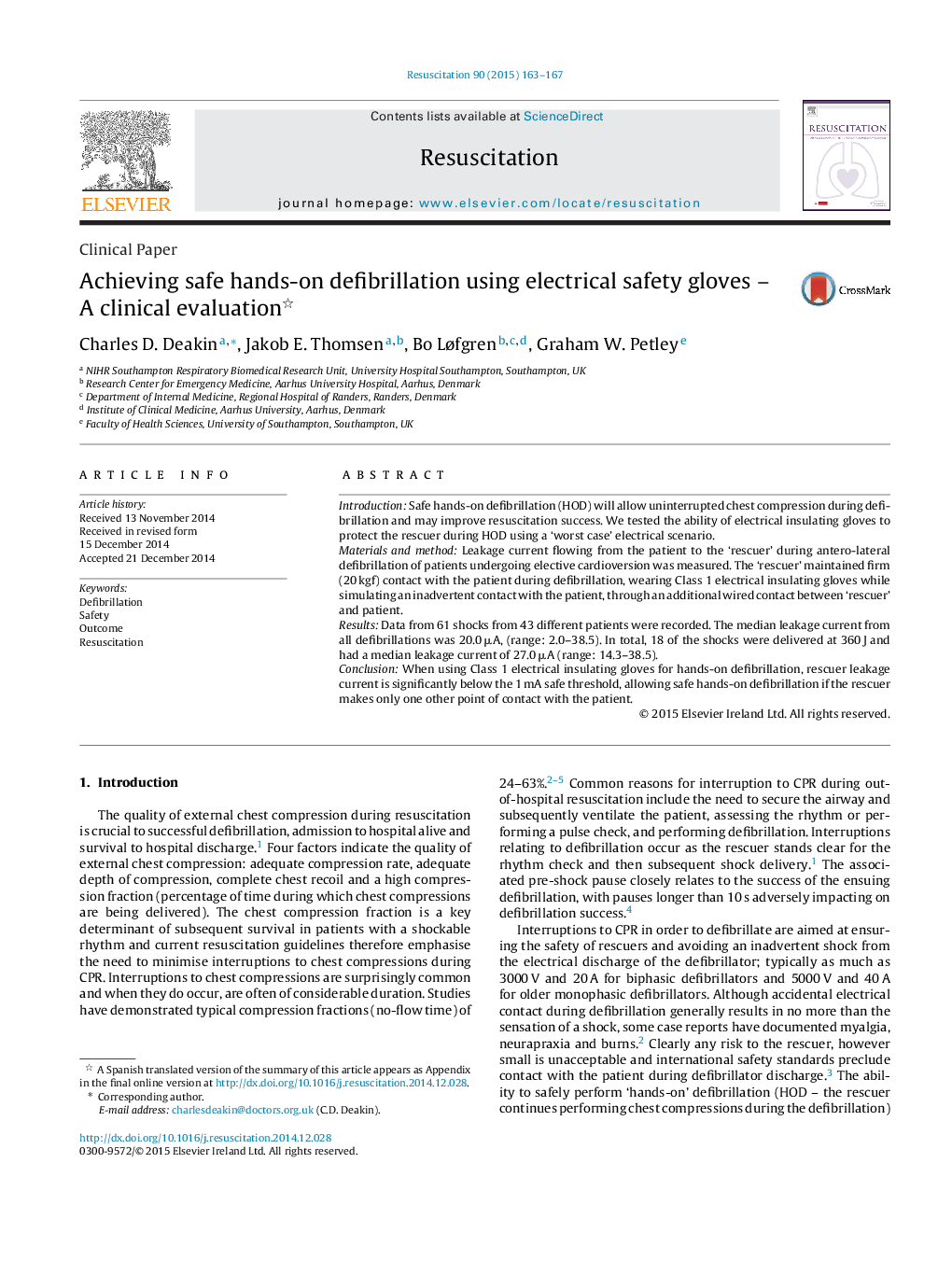| Article ID | Journal | Published Year | Pages | File Type |
|---|---|---|---|---|
| 3007949 | Resuscitation | 2015 | 5 Pages |
IntroductionSafe hands-on defibrillation (HOD) will allow uninterrupted chest compression during defibrillation and may improve resuscitation success. We tested the ability of electrical insulating gloves to protect the rescuer during HOD using a ‘worst case’ electrical scenario.Materials and methodLeakage current flowing from the patient to the ‘rescuer’ during antero-lateral defibrillation of patients undergoing elective cardioversion was measured. The ‘rescuer’ maintained firm (20 kgf) contact with the patient during defibrillation, wearing Class 1 electrical insulating gloves while simulating an inadvertent contact with the patient, through an additional wired contact between ‘rescuer’ and patient.ResultsData from 61 shocks from 43 different patients were recorded. The median leakage current from all defibrillations was 20.0 μA, (range: 2.0–38.5). In total, 18 of the shocks were delivered at 360 J and had a median leakage current of 27.0 μA (range: 14.3–38.5).ConclusionWhen using Class 1 electrical insulating gloves for hands-on defibrillation, rescuer leakage current is significantly below the 1 mA safe threshold, allowing safe hands-on defibrillation if the rescuer makes only one other point of contact with the patient.
